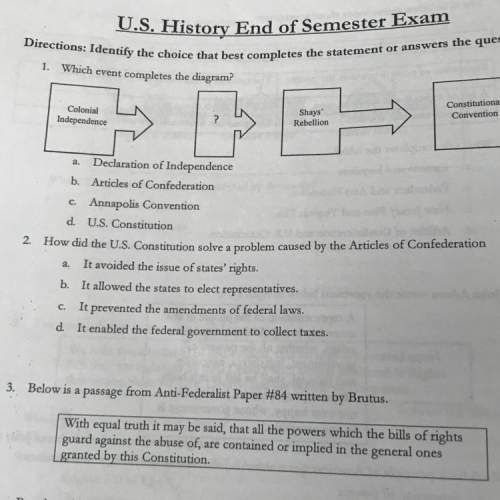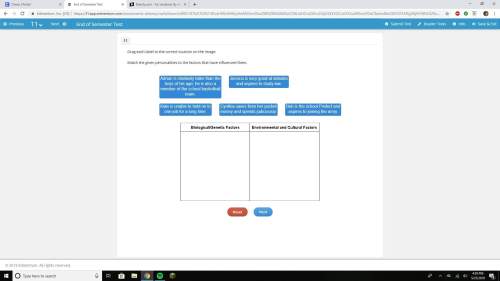
History, 14.10.2019 22:00, montgomerykarloxc24x
Which of these is not true of the spread of the bubonic plague described in boccaccio's quote?
a) trade and travel decreased in the 1400s in europe because so many people were scared of contracting this deadly disease.
b) many europeans believed that the spread of the bubonic plague was caused because of god's wrath on the sins of mankind.
c) the rule of the mongols to spread the bubonic plague by make travel along the silk roads safer and more effective.
d) the plague killed millions as merchants unwittingly brought it with them from european town to european town as they traveled.
2)
following the period of the crusades
a) christian invaders adopted muslim scientific learning and military techniques.
b) christian invaders destroyed most evidence of muslim intellectual achievements.
c) muslim defenders repeatedly lost major portions of their empire to the christians.
d) muslim defenders adopted christian military practices in order to defeat their foes.
3)
during the middle ages, which group was generally responsible for the preservation of learning and ancient literature?
a) nobles and kings
b) priests and monks
c) doctors and lawyers
d) traders and businessmen
4)
one indirect consequence of the crusades was that
a) trade routes declined dramatically due to the prolonged fighting and bloodshed.
b) europeans cut off all trade with asia and began to trade exclusively with the continent of africa.
c) muslim merchants began to focus on overland trade with china on roads that had not been used for hundreds of years.
d) trade increased as europeans were exposed to new asian goods and technologies through interactions with the muslim world.
5)
the map above most clearly reflects which of these developments of the time period?
a) the movement of peoples caused environmental and linguistic effects.
b) there was continued diffusion of crops and pathogens, including epidemic disease.
c) improved transportation technologies and commercial practices led to an increased volume of trade.
d) cross-cultural exchanges were fostered by the intensification of existing, or the creation of new, networks of trade and communication.
6)
as a result of the black death (bubonic plague)
a) the aztec civilization was nearly destroyed.
b) the crusades failed to achieve their objective.
c) the decline of the feudal system was accelerated.
d) the mongols were able to take much of the middle east.
7)
this painting is a representation of
a) the slave system.
b) the manorial system.
c) the hacienda system.
d) the encomienda system.
8)
the biggest disrupter to the social structure of medieval europe was
a) the age of exploration.
b) the napoleonic revolutions.
c) the spread of the bubonic plague.
d) the invasion of the mongol empire.
9)
which of these accurately describes one of the most important effects of the crusades?
a) feudal lords became more controlling
b) jews and christians grew closer together
c) mediterranean trade slowed for centuries
d) the power of the catholic church decreased
10)
how did the monasteries of western europe preserve the knowledge of the greeks and romans and early christians?
a) they hand copied written documents for their libraries.
b) they provided food for those in need in their communities.
c) they adopted and spread the culture of the greeks and romans.
d) they restored the ancient structures built by the greeks and romans.
11)
which of these best explains why guilds had a positive effect on trade during the middle ages?
a) guilds offered membership based on patriarchy and primogeniture.
b) guilds joined trade leagues due to intimidation by non-christians.
c) guilds petitioned rulers to remove taxes and tolls that impeded trade.
d) guilds were based on religion and each religion had specific marketplaces.
12)
- knight
- vassal
- serf
- peasant
these terms are most associated with which period in world history?
a) middle ages
b) neolithic age
c) hellenistic period
d) industrial revolution
13)
why did the bubonic plague most likely first occur in europe in port towns in italy and france?
a) boats landed at these ports with infected passengers and rodents.
b) the southwest portion of europe was the origin of the bubonic plague.
c) europe's inland towns had better hygiene and sanitation than port towns.
d) people living near the ocean were more vulnerable to the bubonic plague.

Answers: 3
Other questions on the subject: History



History, 22.06.2019 07:30, kiararoman1715
What was a goal of the treaty of versailles? question 4 options: to germany rebuild its industry to build better roads and factories in germany to make sure germany did not invade france in the future to give great britain and the united states credit for their in wwi
Answers: 2

History, 22.06.2019 15:00, jessiebotello7209
Ineed an which step during a civil case is when the two sides gather evidence? a. pleading b. discovery c. answer d. appeal
Answers: 1
Do you know the correct answer?
Which of these is not true of the spread of the bubonic plague described in boccaccio's quote?
Questions in other subjects:









Mathematics, 26.06.2019 16:00

Biology, 26.06.2019 16:00








